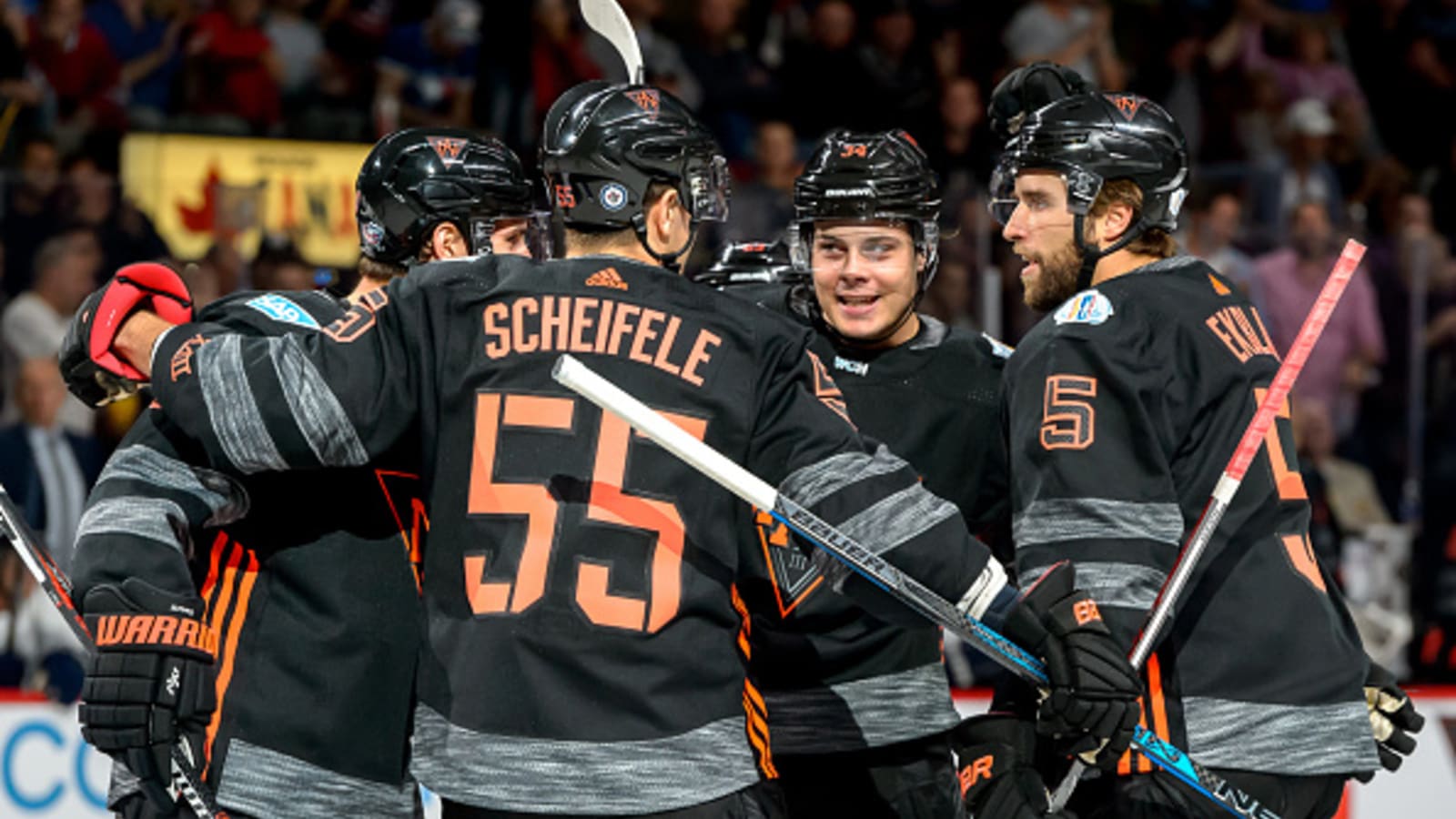
Team North America's success could hinge on how quickly players create chemistry
One of the biggest draws to international sports events is seeing players that are typically on opposing teams get together and wear the same jersey and the World Cup is one of the best examples of this.
Across the teams participating in the upcoming World Cup of Hockey, there is a plethora of players who have experience playing together on the international level, despite sporting different sweaters during the NHL season. (One example: There’s no love loss between the LA Kings and San Jose Sharks, but Drew Doughty and Marc-Edouard Vlasic were quite the dynamic duo on Team Canada’s blue line in the last Winter Olympics.) So there is already some established chemistry on these teams headed into the big tournament at the end of September.
Then, there’s Team North America.
Sure the roster of young bucks is impressive. They don’t, however, have that same leg-up that the other teams do, with combos of players that have experience and chemistry from previously playing together. Team North America can’t just rely on flashy one-skater shows to be successful in the World Cup of Hockey—their success will also hinge on how quickly they combine their hockey superpowers to get into a collective groove.
Team North America: Power Playpic.twitter.com/0kmTDcY2IU
— Michael Traikos (@Michael_Traikos) September 7, 2016
Again, it is hard to believe that such stellar mix of young hockey talent couldn’t put up a fight in Toronto. (Just look at that top power play unit!) However some players on this squad have already shown that a single player’s efforts can’t make a whole team competitive. Connor McDavid is a prime example, after having a stellar rookie season that wasn’t enough to save the Edmonton Oilers from a dismal 31-43-8 record at the end of the 2015-16 regular season. Surely nobody knows that more than Oilers’ coach Todd McLellan, who will also be behind the bench for Team North America. McLellan reportedly told NHL.com that his first step in getting a young team that doesn’t know each other well into tournament mode:
“Well, we're trying to jam a lot of information into three days," McLellan said. "You know, we play (pre-tournament game) in three days, and we're trying to give them simple structure and give them an idea of what … we're trying to predict what might happen on the ice for each of them. After that, we're turning them loose and we're going to get them going. So we're walking them through situations, whether it's the power-play breakout, it's our one opportunity."
Then, once that “simple structure” is set, everyone on the Team Young Guns will have to contribute if they are going to match up against the competition. Like 2016 Calder Cup finalist Shayne Gostisbehere being as big of a catalyst as he was for the Philadelphia Flyers making the playoffs this past season, as one example. In a SportsNet article that maps out how Team NA could win the Cup, Jonathan Willis breaks down their keys to success against Team Finland:
“The Finns have three decent forward lines, but only three proven NHL defencemen, making their second and third pairs on the blue line vulnerable to North America’s balanced attack. Players like Nathan MacKinnon and perhaps Auston Matthews, both expected to play on lower lines, will be critical here...”
... and against Team Russia
“Both they and Team North America will be coming off a game the night before, so there won’t be much of a rest advantage, but that shared fatigue should make it easier to grind down a suspect defense… Andrei Markov, likely to be Russia’s best defenseman, turns 38 in December. Dmitri Orlov and Kulikov anchor the other two pairs. That isn’t inspiring. As long as the Young Guns’ defense can hold down the fort—and with Aaron Ekblad, Jacob Trouba, and Seth Jones all anchoring pairings that should be possible—an aggressive attack could win the day.”
This all sounds very doable. With the wealth of talent on Team North America has, there’s no reason that they can’t take the foundation set down by McLellan and Company and then all contribute. But can they do it just a couple of days? Can they all get on the same page soon enough to compete with teams that have had many years to build some solid chemistry?
They will have to, if they want to stay alive in the World Cup of Hockey.
More must-reads:
- Team North America will play two anthems, Team Europe won’t have one
- Tortorella blasts Max Pacioretty: 'I need more out of him'
- The 'No. 1 NHL draft picks' quiz
Breaking News
Customize Your Newsletter
 +
+
Get the latest news and rumors, customized to your favorite sports and teams. Emailed daily. Always free!

